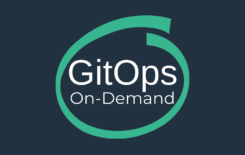By adopting this plug-in architecture, you’re free to configure your pipeline and reporting to create a regular and consistent schedule for releases. Instead of loose API integrations, you now have a single coherent interface that cuts through the different formats and tracking methods to help you get on top of things.
What Does a Release Orchestration Platform Do?
Release Orchestration is becoming the solution of choice in the modern organization. The positions that can see the positive effects include:
Release Managers – This is quite obvious since Release Managers are the primary users of release orchestration platforms. Putting everything in a unified place lessens some of the burdens of providing visibility and status updates, freeing release managers to focus on overall planning and execution of the release.
A centralized dashboard also allows to pinpoint releases that are in trouble to quickly bubble up to the top, giving critical visibility to areas that need immediate focus. If your release orchestration platform has predictive risk analysis functionality, you can even see releases that are about to go red.
Development and QA Teams – In a nutshell, anyone trying to get changes out to production can benefit from release orchestration platforms. Organizations today are decoupling their releases and moving away from regularly scheduled and predictable dates. Release orchestration tools provide visibility in this reality.
Teams can now get a birds-eye view into the release roadmap and locate where in the life cycle each of the releases is. Knowing when the key milestones and due dates are for a release (such as testing, code freeze and so on) makes it easy to figure out which release branch makes the most sense to commit to.
IT Leadership – CTOs and managers of large IT organizations can find it difficult to get a sense of what exactly is happening and how efficiently their teams are performing. Release Orchestration Platforms can help them learn about the benefits they are getting and if the investment in DevOps has been worth it.
Everything from planning to delivery is connected to the release. Modeling your release workflow offers the best window to measure from. Aside from understanding what’s happening, it’s also important for business leaders to ensure that quality and compliance requirements are being performed.
Additional actions such as security scanning, penetration testing, performance testing and more can be modeled as required components of your releases.
5 Reasons You Should Have a Release Orchestration Platform
After we have understood what stakeholders can benefit directly from Release Orchestration, lets see the top 5 benefits of having a platform in place:
1 – Automation
One of the biggest benefits of service orchestration is automation. The ability to accurately, efficiently and quickly automate tasks that previously had to be performed manually enables service providers to reduce operational expenses and time to market for the multitude of new services that will appear.
Additionally, these tasks can be automated, regardless of where they are carried out – on premise, in the cloud, or other hybrid configurations. The ability to optimize the usage of resources also leads to a reduction in monetary, resource, manpower, and time-related expenses.
2 – Efficiency
Release Orchestration Platforms help organizations drive efficiency into their application development, IT operations, and development operations through better planning, control, and process automation of the continuous delivery of changes – major, minor, and emergency.
In other words, these efficiencies give companies the ability to choose how to make best use of their savings to introduce more innovation in the same amount of time, shorten the deployment time, or spend more time on quality control.
3 – Improved Cross Department Communication
Having such a platform improves the communication between release managers, with everyone working in sync even during peak times. Furthermore, senior release managers get a clear and consistent overview of all the releases in their domain in one centralized dashboard, making life easier for all sides involved.
This advantage has a ripple effect, as relations with development, quality and operations teams are significantly improved. With everybody on board, the entire organization is revitalized, leading to better productivity and motivation in all departments. This obviously is also reflected in the quality of the product.
4 – Cost Savings
Having tasks automated naturally leads to greater operational efficiency, so service providers can realize revenues from deploying new services faster. The ability to simplify the creation of advanced services also enables service providers to significantly lower the cost of ownership.
5 – Time to Market
Having a greater level of automation means that you can now launch more services and get them to market faster, leading to the cost saving and revenue benefits described above. Release orchestration enables service providers to offer their consumers more tailored and customized services.
This basically means that your products will gain more traction and positive buzz in the markets due to amplified customer satisfaction levels.
Automation – Orchestration’s Best Friend
Because orchestration release platforms implement delivery pipelines based on templates, you can always feel confident that a consistent, foolproof and repeatable process is being followed every time you run your release, regardless of whether its a daily, weekly, or even quarterly thing.
Additionally, feedback and insights from previous releases can be easily integrated into future releases, ensuring that each release runs a bit better and is a bit more reliable than the previous ones. This incremental overall improvement and fine-tuning is at the core of the DevOps philosophy.
The end result is a complete and seamless pipeline that can be triggered at the push of a button. You can enjoy something that handles all the interactions with external systems – testing, deployment, CI software like Jenkins, ticketing systems (i.e – JIRA), while presenting a holistic view of your progress.
All stakeholders can now gain enhanced visibility to learn what risks exist and what’s not working. Scaling and filling the gaps has never been easier.





